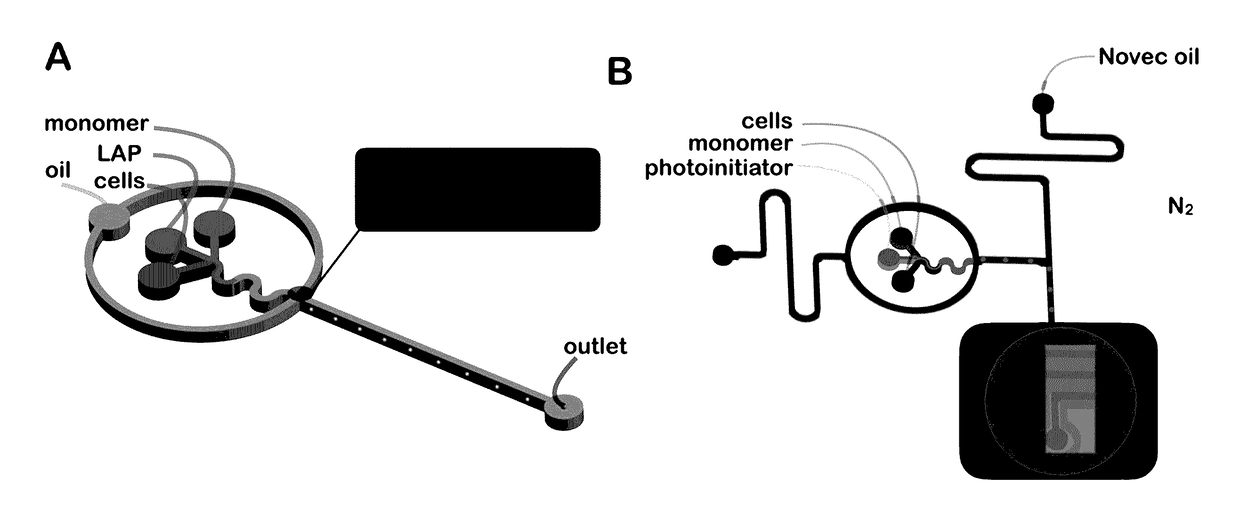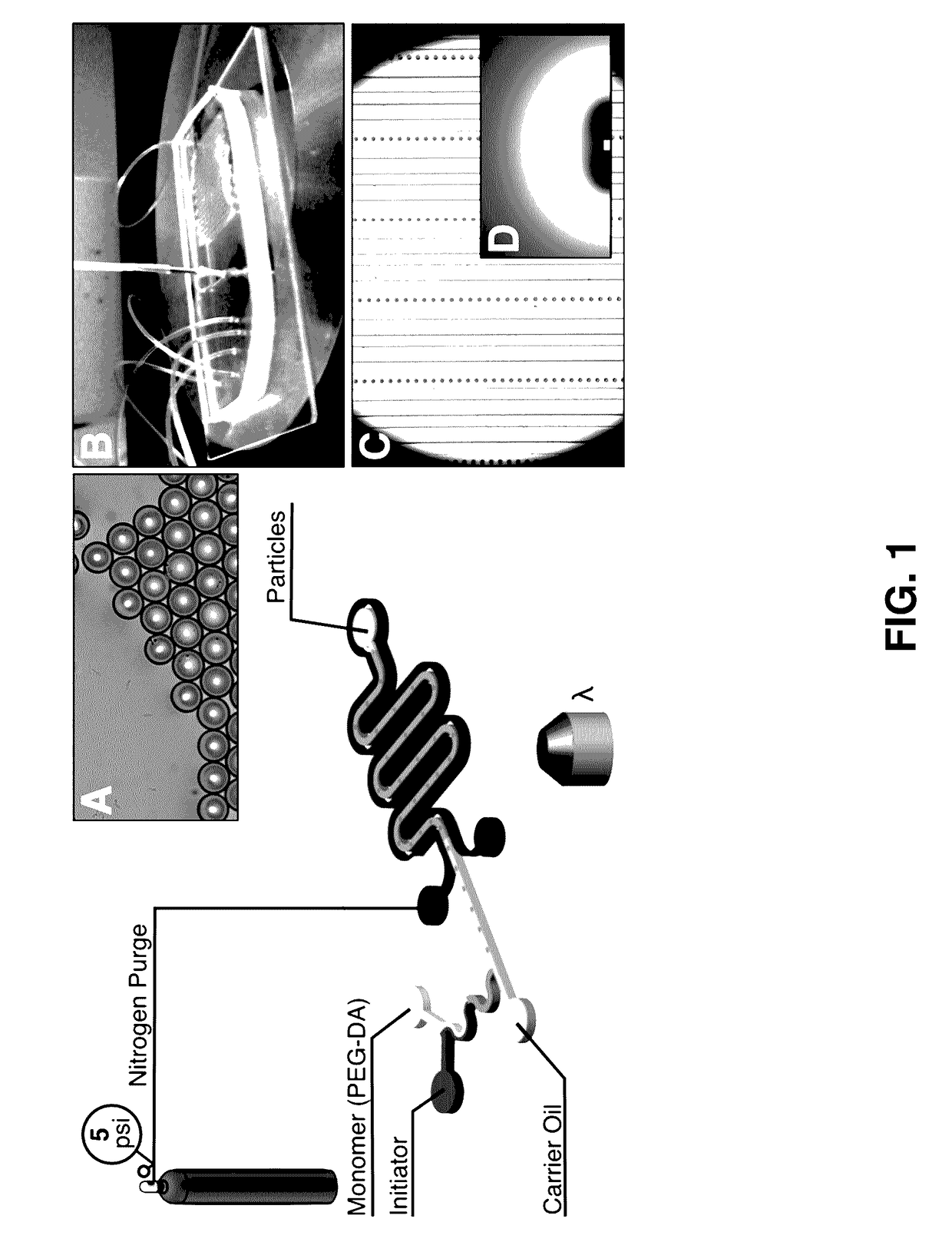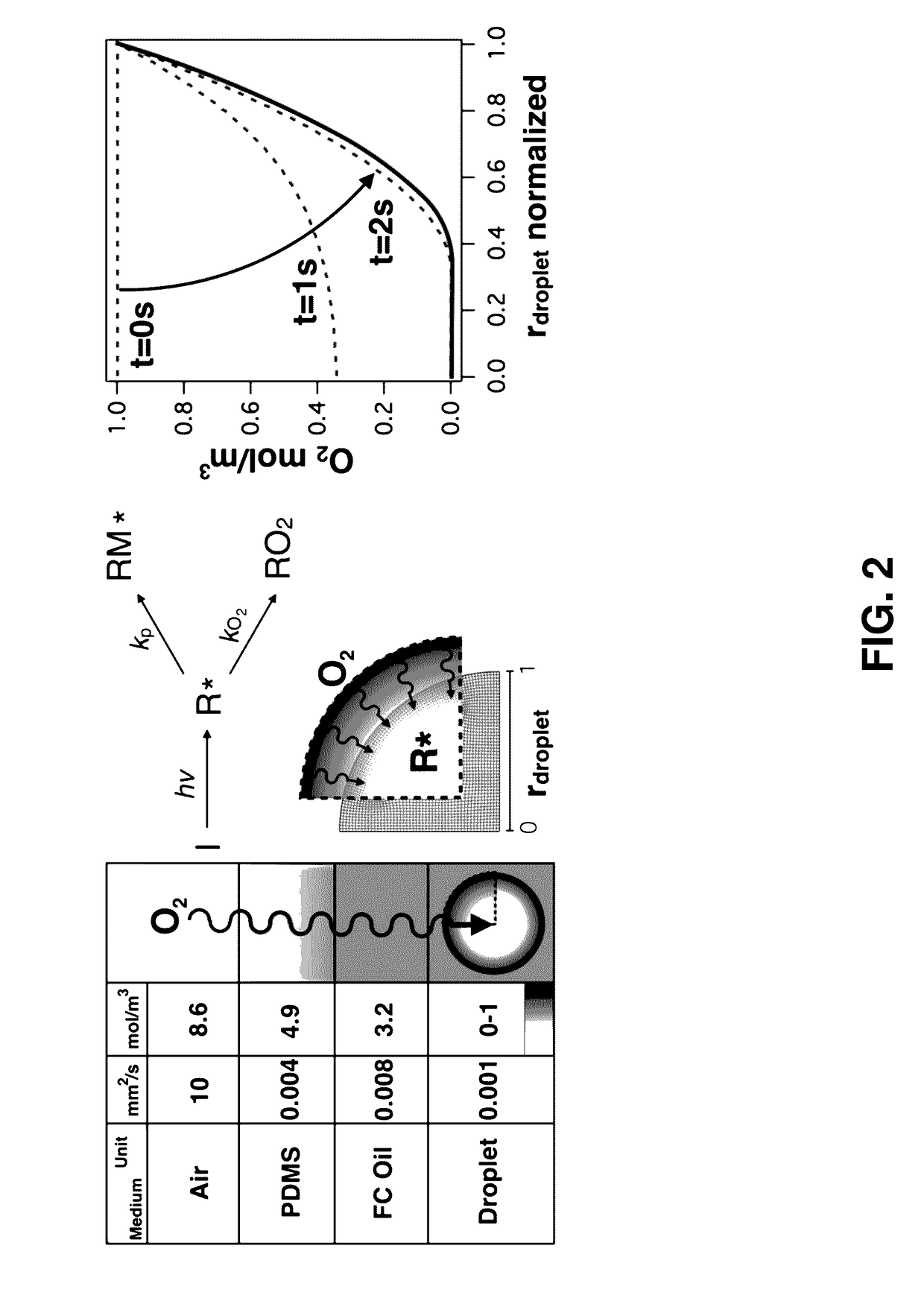Methods of Generating Microparticles and Porous Hydrogels Using Microfluidics
a technology of porous hydrogels and microparticles, which is applied in the direction of microcapsules, transportation and packaging, prosthesis, etc., can solve the problems of inhibiting polymerization, chemical interference with the initiator, and oxygen-containing species which may be harmful or toxic,
- Summary
- Abstract
- Description
- Claims
- Application Information
AI Technical Summary
Benefits of technology
Problems solved by technology
Method used
Image
Examples
example 1
rse Polyethylene Glycol Diacrylate Hydrogel Microsphere Formation by Oxygen-Controlled Photo-Polymerization in a Microfluidic Device
Introduction
[0079]Acrylate-based polymers are regarded for their transparency, color variation, robust mechanical properties, and elasticity (REF 1.1). Acrylates are easily photopolymerized on industrial scales and widely used in chemical applications as adhesives, sealant composites, and protective coatings (REF 1.1, 1.2). Compared to other synthetic monomers, acrylates are often preferred due to their biocompatibility and chemical versatility, allowing modification with a range of monofunctional or multifunctional moieties (REF 1.3-1.4). Oligomeric acrylates can be used to produce highly crosslinked networks by photopolymerization methods (REF 1.5). Based on these characteristics, a class of photopolymerizable polyethylene glycol (PEG)-based hydrogels has been developed around acrylate polymerization chemistries (REF 1.6-1.8).
[0080]Photopolymerization...
example 2
or Decreasing Oxygen Concentration in Nitrogen-Microjacketed Microfluidic Devices
Introduction
[0103]In this example, nitrogen microjacketed microfluidic devices were modified by adding prepurged channels for Novec 7500 to further decrease the oxygen concentration in device to a lower level. When nitrogen pressure was increased, less photoinitiator (LAP) was needed for the polymerization, and corresponding a higher post-encapsulation viability of cells were obtained. This new approach can be used to produce size-controllable micro hydrogels, which are compatible with the commercial-available flow cytometry methods that provide for a high level of viability of cells after encapsulation.
Materials and Methods
Cell Culture
[0104]Human lung adenocarcinoma epithelial cells (A549) were used for this research and maintained in low-glucose Dulbecco's modified Eagles's medium (DMEM; Life Technologies, USA) supplemented with 10% fetal bovine serum (Life Technologies, USA), 1% Pen / Strep, and 0.2% F...
example 3
g Hydrogel Inverse Opal Architectures with Photodegradable Microparticles
[0120]Inverse colloidal crystals (ICCs) are the product of a lost wax fabrication method in which colloidal particles are assembled into ordered matrices in the presence of a liquid continuous phase. Following solidification of the continuous phase, particles are subsequently extracted, leaving behind a structured pore network. ICCs have been developed for a variety of scientific and technological applications, yet their utility remains limited by harsh processing conditions required to solubilize particles for pore framework formation.
[0121]In this example, we demonstrate a new approach to the production of ICCs based on a method involving synthesis of photodegradable polyethylene glycol diacrylate particles. Since degradation of particulate phase requires only optical illumination, particle assemblies can be eroded within tightly confining microchannels, creating microfluidic-integrated ICCs. Photodegradable ...
PUM
| Property | Measurement | Unit |
|---|---|---|
| Fraction | aaaaa | aaaaa |
| Fraction | aaaaa | aaaaa |
| Fraction | aaaaa | aaaaa |
Abstract
Description
Claims
Application Information
 Login to View More
Login to View More - R&D
- Intellectual Property
- Life Sciences
- Materials
- Tech Scout
- Unparalleled Data Quality
- Higher Quality Content
- 60% Fewer Hallucinations
Browse by: Latest US Patents, China's latest patents, Technical Efficacy Thesaurus, Application Domain, Technology Topic, Popular Technical Reports.
© 2025 PatSnap. All rights reserved.Legal|Privacy policy|Modern Slavery Act Transparency Statement|Sitemap|About US| Contact US: help@patsnap.com



